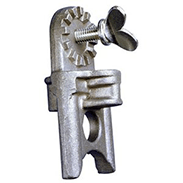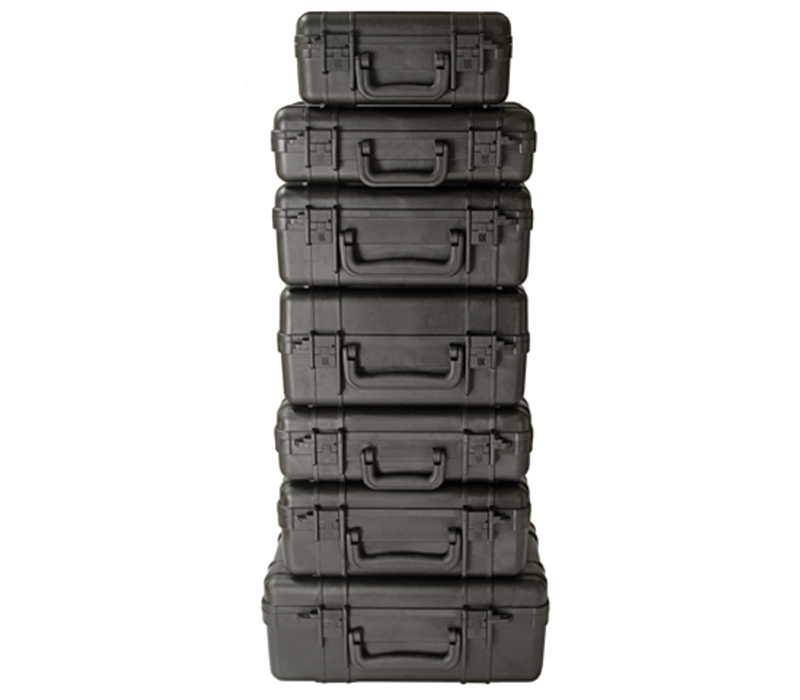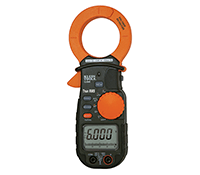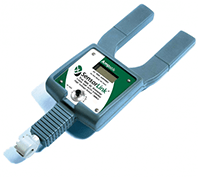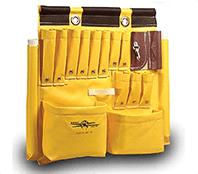
TGM Series Glove-Sleeve Testing Equipment
Semi-Automatic Testing of lineman’s glove and sleeves
Up to 70,000V DC with built in Power Supply
Test voltage and time automatically adjusted
Allows Testing to ASTM D120 and F496 Standards
The TGM022 is The VON Corporation’s most economical glove and sleeve tester. Units allow testing of Gloves and Sleeves. All standard rubber goods can be tested, even class IV. Test voltage and test time are set by selecting the type of glove to be tested through a menu based system. Glove and sleeves are loaded and filled with water manually. A TGM024 and TGM026 are available with 4 and 6 glove capacities respectively.
GLOVE TESTING: The one piece machine will simultaneously test one or two lineman’s gloves or sleeves. The center to center spacing is 9 inches to accommodate Class IV gloves which are tested at 70,000 volts D.C. Clothespin type holders are provided which do not pinch the gloves. The same holders are used for testing both straight and curved sleeves.
SLEEVE TESTING: The machine is capable of testing all standard sleeves using the sling method or the hammock method in accordance with the latest ASTM D1051 and F496 standards. Two class II or lower sleeves can be tested at a time using the inverted method. One class III or IV sleeve can be tested at a time by the hammock method, which eliminates the requirement of the straight method for dielectric liquid in the bottom of the tank
VOLTAGE: The input voltage is 120 volt 50-60 hertz A.C. single phase 10 amps for the blowers and the motor operated automatic grounding system. (240 volt AC available) The test voltage is raised and lowered automatically, based on the appropriate values for the type of glove specified. Fault detection is performed by the system controller.
HIGH VOLTAGE TEST TANK: The tank is constructed of stainless steel for corrosion protection. A valve is provided in the bottom of the tank to drain the water to clean the tank. The tank is filled to the proper level. Using a pitcher, water is taken from the tank to fill the gloves and put back in at the end of the test.
VENTILATION: 100 cfm of air flow is directed toward the gloves/sleeves to help dry any water that spills on the gloves and to prevent the water drops from going up the glove at 70kv. An exhaust fan in the rear of the cabinet pulls air across the surface of the water to remove ozone from the test area.
ENCLOSURE: The TGM series consist of a free standing cabinet 22″ deep x 79″ tall. The TGM-022 is 30” wide, the TGM-024 is 48” wide and the TGM-026 is 66” wide, The loading door is interlocked with a motor operated fail-safe discharge device.
OPERATION: The operator opens the hinged loading door to remove a clothes pin and electrode assembly from the high voltage bus. He checks to see if the clothes pins are fastened to electrode in the position that will give the proper cuff to water line distance for the test voltage. He adjusts the cuff to water line distance by changing the location of the clothes pins on the electrode using the thumbscrew adjustment. He then hangs the glove by the clothes pins. The glove with its clothes pin and electrode assembly is hung on the HV bus. Using a plastic pitcher, water is taken from the test tank and put into the glove until the inside is filled to the correct water level. Then a glove is loaded into the second clothes pin and electrode assembly. When testing only one glove, the second clothes pin and electrode assembly may be hung from a hook in the upper right corner of the unit.
After loading the gloves or sleeves, the operator closes the loading door.
The operator then chooses the types of gloves to be tested from the menu based system controller. By pressing the START button, the unit will automatically turn the fans on, raise the high voltage, maintain the voltage for the specified length of time, and lower the voltage after the test. If a glove fails the unit will automatically indicate a failure and shut down the power supply. The faulted glove can be determined by removing one glove and checking each glove individually, or checking each glove for holes with an inflation test.









